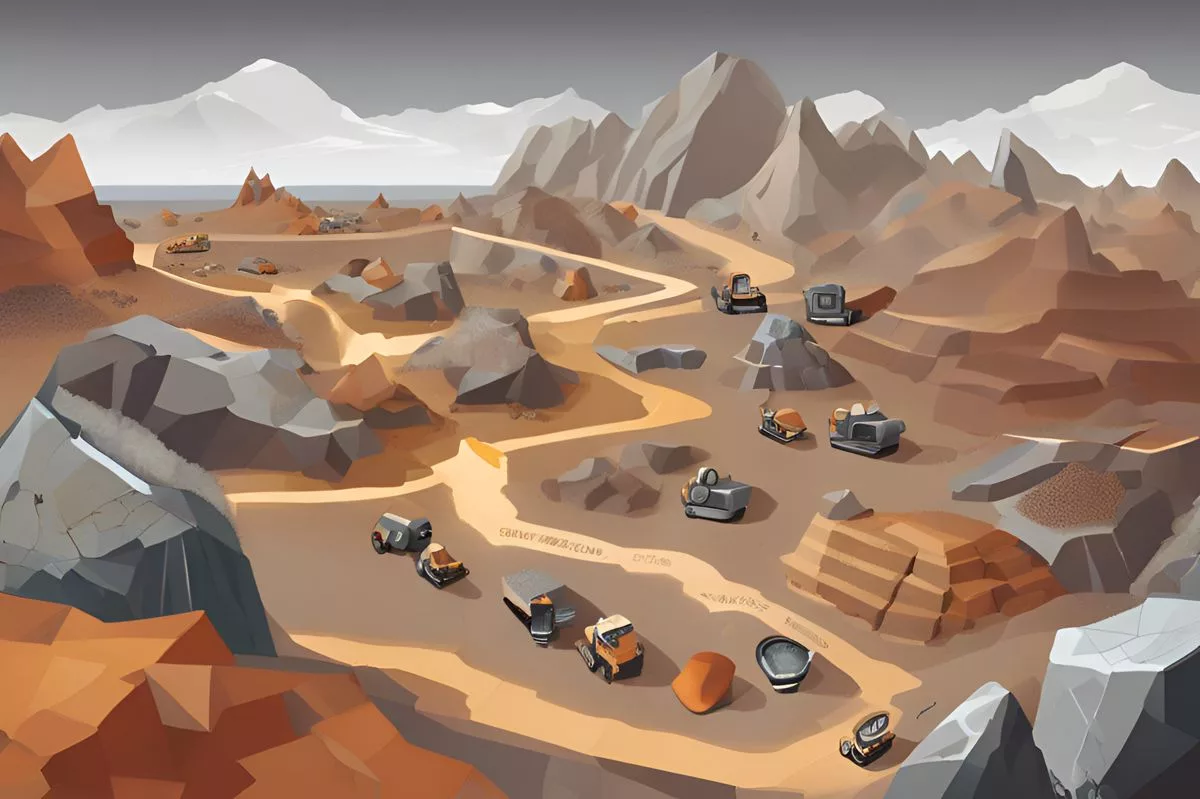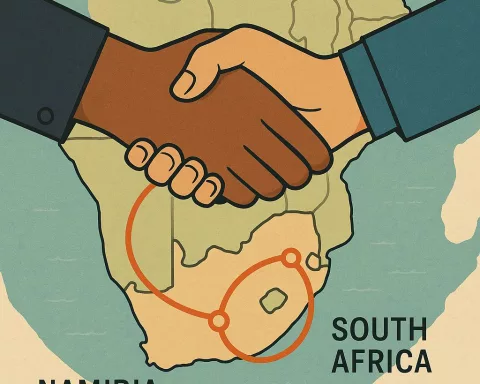The Johannesburg Mining Indaba is a vital event for South Africa’s mining industry, bringing together leaders to discuss the future. This year, Minister Gwede Mantashe highlighted how mining is key to job creation and economic growth. With challenges like job losses and decreasing mineral production, the government is focusing on improving energy and infrastructure. They aim to diversify minerals, especially in new energy technologies, while also encouraging investment and supporting small miners. These efforts will help secure a brighter future for both the mining sector and the country.
What is the significance of the Johannesburg Mining Indaba for South Africa’s mining industry?
The Johannesburg Mining Indaba is crucial for South Africa’s mining sector as it brings together industry leaders and government officials to address key challenges and opportunities. Key topics include enhancing investment, diversifying mineral resources, and ensuring energy stability to sustain economic growth and job creation.
The annual Johannesburg Mining Indaba at The Inanda Club, Sandton, is a pivotal event for South Africa’s mining industry, attracting key players from the sector, government officials, and stakeholders. This year, Minister Gwede Mantashe’s insightful speech highlighted the mining industry’s profound influence on the nation’s economic and social fabric. He stressed the essential contribution the sector makes to fostering inclusive economic growth, creating jobs, and alleviating poverty.
Mining’s Historical and Economic Role
Mining has been the backbone of South Africa’s economy for over a century, powering industrial expansion since the late 1800s. Despite this, the sector currently grapples with challenges, such as diminishing production levels from major minerals like gold, coal, and iron ore. Recent reports indicate a loss of 7,000 jobs due to these production declines. Nevertheless, the mining industry continues to play a crucial role in the economy, contributing significantly to GDP growth, which recently experienced a slight rise of 0.4% in the second quarter of 2024.
To rejuvenate this vital sector, the government is prioritizing enhancements in infrastructure and energy stability. Mantashe emphasized the need for efficient transport and port infrastructure, combined with a dependable electricity supply. Government collaboration with Transnet through the National Logistics Crisis Committee demonstrates a commitment to addressing logistical hurdles. Moreover, the consistent electricity supply in recent months, with several coal plants achieving an Energy Availability Factor above 70%, marks a significant advancement towards ending load shedding. This energy stability is essential for mining companies that rely heavily on electricity.
Diversifying Mineral Resources
South Africa’s mining industry is shifting focus from traditional minerals to widen its portfolio of valuable resources. The country is home to the largest known deposits of platinum group metals (PGMs), manganese, and chrome, which are crucial for advancing new energy technologies. Mantashe pointed out the government’s strategic emphasis on these commodities, highlighting South Africa’s pivotal role in the global market for materials like palladium and rhodium. Despite market volatility, these minerals hold the promise of sustaining and potentially enhancing the mining sector’s economic impact.
Coal remains a complex but vital element in South Africa’s energy framework. Since the late 1860s, coal mining has played a key role in electricity generation and supporting various industries. Although there is global pressure to shift away from fossil fuels, coal’s significance in base-load power generation and industrial uses maintains its critical status in both domestic and international markets.
Mantashe advocated for transitioning from a “pit-to-port” model to one that focuses on value addition, suggesting that exporting refined products instead of raw materials can prevent job and profit losses associated with exporting unfinished goods. Steps like revitalizing smelting facilities and collaborating with manganese and chrome producers are part of efforts to reestablish South Africa as a leader in mineral processing. Achieving this shift requires stable and affordable energy, electricity tariffs linked to commodity values, and beneficial tax policies to limit the export of unprocessed minerals.
Enhancing Investment and Exploration
A significant part of Mantashe’s address revolved around the necessity for clear policies and regulations to attract investment. The Department of Mineral and Petroleum Resources is actively revising the Mineral and Petroleum Resources Development Act (MPRDA) to align with global standards, ensuring a strong regulatory foundation. By June next year, the completion of a new and transparent mining licensing system aims to streamline processes, reduce application backlogs, and create a more business-friendly environment.
Furthermore, the creation of an exploration fund to support junior miners is a forward-thinking strategy to discover new mineral deposits. With over 115 applications for exploration funding, the government’s focus on geographic diversity and a range of minerals underscores the untapped possibilities within the nation. These efforts aim to strengthen the presence of junior and emerging miners, positioning South Africa as a leading destination for mineral exploration.
In parallel, the Industrial Development Corporation (IDC) is finalizing agreements to assist small-scale miners with a R72 million fund. Progress has been slower than expected, but these funds are intended to tap into marginal deposits and create job opportunities within the sector. Encouraging the operation of dormant mines, inspired by the successful Arnot mine model, presents a path to revitalizing economic activity and empowering workers through ownership transfers.
Building a Sustainable Mining Future
Mantashe’s address at the Joburg Indaba underscored the dynamic challenges and opportunities within South Africa’s mining sector. By promoting innovation in mineral processing, ensuring regulatory transparency, and supporting junior miners, the nation aims to leverage its vast mineral resources. These efforts not only seek to sustain the mining industry but also to transform it, ensuring its continued significance in the country’s economic development.
Through these strategic initiatives, South Africa aspires to maintain its position as a global mining powerhouse, while fostering a more inclusive and resilient economy. The focus on diversifying mineral resources and enhancing value-added production is poised to create a more sustainable future for the mining sector, benefiting not only the industry but also the broader society.
“`markdown
What is the Johannesburg Mining Indaba?
The Johannesburg Mining Indaba is an annual event that serves as a crucial platform for South Africa’s mining industry. It gathers industry leaders, government officials, and stakeholders to discuss challenges and opportunities for the future, focusing on investment, mineral diversification, and energy stability.
Why is mining important for South Africa’s economy?
Mining has historically been the backbone of South Africa’s economy, significantly contributing to GDP growth and job creation. Despite facing challenges like declining production levels and job losses, the sector remains vital for fostering inclusive economic growth and alleviating poverty in the country.
What challenges is the mining industry currently facing?
The South African mining industry is grappling with several challenges, including job losses, decreasing production of major minerals like gold and coal, and the need for improved infrastructure and energy stability. Recent reports indicate a loss of 7,000 jobs due to production declines, highlighting the urgency for strategic interventions.
How is the government supporting the mining sector’s future?
The government is prioritizing improvements in energy and infrastructure to revitalize the mining sector. This includes collaborations with Transnet to address logistical hurdles and initiatives to ensure a stable electricity supply. The government is also focusing on diversifying mineral resources and revising policies to attract investment.
What steps are being taken to diversify mineral resources in South Africa?
Efforts to diversify mineral resources include shifting focus from traditional minerals to valuable resources such as platinum group metals, manganese, and chrome. The government emphasizes transitioning to a value-added model, encouraging the export of refined products rather than raw materials to preserve jobs and maximize profits.
How is the government promoting investment and support for junior miners?
The Department of Mineral and Petroleum Resources is revising regulatory frameworks to attract investment and streamline the mining licensing process. Additionally, the creation of an exploration fund aims to support junior miners in discovering new mineral deposits, while the Industrial Development Corporation (IDC) is assisting small-scale miners with financial resources to tap into marginal deposits.
“`












